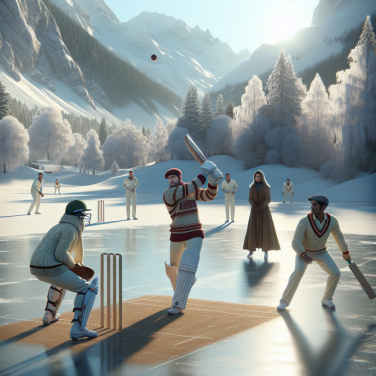Training Tips for Tackling the Stamina and Skill of Biathlon Events
To excel in the demanding sport of biathlon, athletes must combine the endurance and strength required for cross-country skiing with the precision and calmness necessary for shooting. Success in biathlons hinges on the optimal balance between these two contrasting elements. Here are some valuable training tips that can help you improve your stamina and skill for biathlon events.
**Develop a Solid Cardiovascular Base**
Biathletes need a high level of cardiovascular fitness to power through the skiing portions of the event. Long, steady-state endurance workouts are crucial for building a strong aerobic base. Include a mix of distance skiing, running, and cycling in your training regimen. Over time, gradually increase the duration and intensity of these workouts to boost your cardiovascular capacity.
**Incorporate High-Intensity Interval Training (HIIT)**
To simulate the intense effort of biathlon races and improve your VO2 max, integrate HIIT into your training plan. These short bursts of high-intensity work followed by recovery periods can help enhance your ability to recover quickly after exertion. Sessions might involve sprint intervals on skis or roller skis and can be tailored to match the specific demands of the biathlon course you'll be racing on.
**Strengthen Key Muscle Groups**
Strength training is an important component of a biathlete's preparation, focusing on muscles used during skiing, such as legs, core, and arms. Regular strength workouts will help to improve your skiing technique and power. Moreover, a solid core is vital for maintaining stability during the shooting phase, ensuring that you can shoot accurately even with an elevated heart rate.
**Practice Shooting Under Pressure**
The transition from skiing at a high speed to shooting with precision requires not only skill but also the ability to calm your mind and body under pressure. Incorporate shooting drills into your training, both in a rested state and immediately after intense physical exertion. This will teach you to lower your heart rate and steady your breathing quickly, allowing for better accuracy during the shooting portions of the event.
**Simulate Race Conditions**
To prepare for the unique challenges of a biathlon, simulate race-day conditions in your training as much as possible. This includes practicing skiing with a rifle on your back and wearing your biathlon suit. Conduct time trials that mimic the format of the biathlon you'll compete in, whether it's a sprint, pursuit, individual, or relay.
**Technical Skiing Drills**
Refining your skiing technique is crucial for efficiency and speed in the biathlon.
Read also:
The Remarkable Versatility of Rope: From Ships to Summits
Perfecting the Delicate Balance Between Cross-Country Skiing and Sharpshooting
Cross-country skiing and sharpshooting are like dance partners in the intricate performance of a biathlon. This dynamic sport demands not only the endurance and speed of a long-distance skier but also the calm and precision of an elite marksman. Finding the equilibrium between these two contrasting disciplines is what sets the best biathletes apart from the rest.
To excel in cross-country skiing, athletes must develop significant cardiovascular stamina, strength, and technique. Long, grueling hours on skis lay the foundation for the speed and efficiency required to cover distances that range from sprints to more than 20 kilometers. High-intensity interval training (HIIT) is a staple in their regimen, ensuring that athletes can push their limits during races. Additionally, roller skiing during off-season months keeps the muscles engaged and helps maintain the technique when snow is not available.
However, speed on skis can only get you so far if you can't hit the targets at the shooting range. This is where the sharpshooting component comes in, demanding mental composure and physical precision. Biathletes train to control their heart rates and breathing even after the most arduous bouts of skiing. They must be adept at quickly calming their bodies to stabilize their weapon for accurate shooting.
One unique aspect of biathlon shooting is the switch between two shooting positions: prone and standing. Prone shooting requires athletes to lie flat on their stomachs, aiming at a target with a diameter of 45 millimeters from a distance of 50 meters. This position is generally more stable, but still challenging after an intense skiing loop. The standing position, conversely, presents a smaller target of 115 millimeters and demands exceptional balance and core strength, particularly as the body is battling fatigue and the elements.
Biathletes use a variety of training techniques to perfect their shooting. Dry-firing, where the athlete practices the trigger pull without ammunition, helps in fine-tuning muscle memory. Precision drills and simulated race conditions enable athletes to adapt to the pressures of competition. The mental game is also critical. They employ mental visualization, breathing exercises, and consistency routines to maintain focus and calm under pressure.
The right equipment also plays a pivotal role in this balancing act. Skis are meticulously waxed and chosen based on snow conditions, while the rifle, which is carried on the back during skiing segments, must be lightweight yet accurate. Balancing the rifle for both comfort and rapid deployment at the shooting range is an art form in itself.




